
William Goffe, c. 1613/1618 - 1679/1680, was an English soldier from London who fought for Parliament during the Wars of the Three Kingdoms. A religious radical nicknamed “Praying William” by contemporaries, he approved the Execution of Charles I in January 1649, but escaped prosecution as a regicide by fleeing to New England.
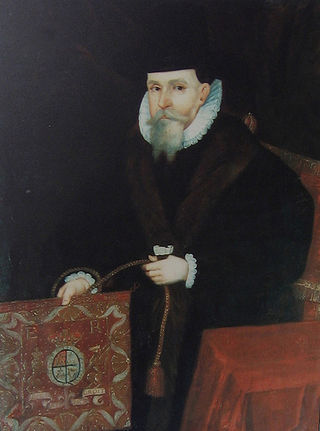
Adam Loftus was an English Anglican bishop who was Archbishop of Armagh, and later Dublin, and Lord Chancellor of Ireland from 1581. He was also the first Provost of Trinity College Dublin.

Charles Blount, 1st Earl of Devonshire, KG was an English nobleman and soldier who served as Lord Deputy of Ireland under Queen Elizabeth I, and later as Lord Lieutenant of Ireland under King James I.

Titus Oates was an English priest who fabricated the "Popish Plot", a supposed Catholic conspiracy to kill King Charles II.

Pierre Cauchon was a French Catholic prelate who served as Bishop of Beauvais from 1420 to 1432. He was a strong partisan of English interests in France during the latter years of the Hundred Years' War. He was the judge in the trial of Joan of Arc and played a key role in her execution. The Catholic Church overturned his verdict in 1456.

Rowland Taylor was an English Protestant martyr during the Marian Persecutions.
Dom Serenus Cressy, O.S.B.,, was an English convert to Catholicism and Benedictine monk, who became a noted scholar in Church history.
Thomas Grant (1816–1870) was a Roman Catholic bishop. He was born in France to British parents in the years following the defeat of the French at Waterloo. He became known as a great negotiator as the Roman Catholic hierarchy was rebuilt in the United Kingdom. He died of cancer while in Rome to attend the first Vatican Council.
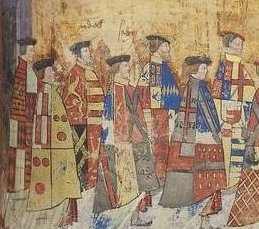
Henry Courtenay, 1st Marquess of Exeter, 2nd Earl of Devon, KG, PC, feudal baron of Okehampton, feudal baron of Plympton, of Tiverton Castle, Okehampton Castle and Colcombe Castle all in Devon, was a grandson of King Edward IV, nephew of the queen consort, Elizabeth of York and a first cousin of King Henry VIII. Henry Courtenay was a close friend of Henry VIII, having "been brought up of a child with his grace in his chamber".

James II and VII was King of England and Ireland as James II and King of Scotland as James VII from the death of his elder brother, Charles II, on 6 February 1685, until he was deposed in the 1688 Glorious Revolution. The last Catholic monarch of England, Scotland, and Ireland, his reign is now remembered primarily for conflicts over religion. However, it also involved struggles over the principles of absolutism and divine right of kings, with his deposition ending a century of political and civil strife by confirming the primacy of the English Parliament over the Crown.

The Catholic Church in England and Wales is part of the worldwide Catholic Church in full communion with the Holy See. Its origins date from the 6th century, when Pope Gregory I through a Roman missionary and Benedictine monk, Augustine, later Augustine of Canterbury, intensified the evangelization of the Kingdom of Kent, linking it to the Holy See in 597 AD.
William Maziere Brady (1825–1894) was an Irish priest, ecclesiastical historian and journalist who converted to Roman Catholicism from Anglicanism.
Michael Ellis was an English Benedictine monk who was a prelate of the Catholic Church. He served as the first Vicar Apostolic of the Western District of England and Wales, and subsequently Bishop of Segni in Italy.
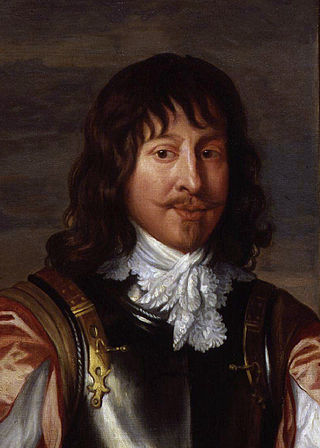
Mountjoy Blount, 1st Earl of Newport was an English courtier and politician who held a number of positions under Charles I of England and supported the Royalists in the First English Civil War.
Robert Phillip was a Scottish Roman Catholic priest, the confessor to Henrietta Maria of France.
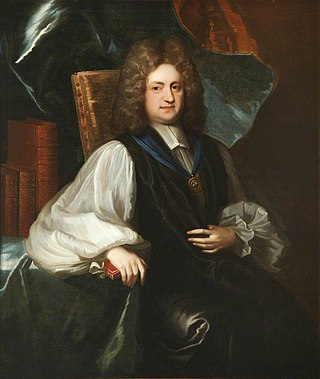
Charles Trimnell (1663–1723) was an English Anglican bishop. He was a Whig in politics, and known for his attacks on High Church views, writing on the subordination of the Church of England to the state. After the accession of George I of Great Britain in 1714 he was in the royal favour and influential.
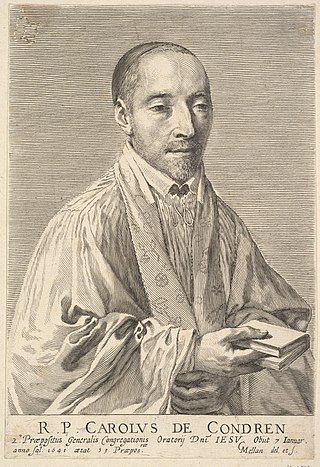
Charles de Condren, Cong. Orat., was a French Catholic mystic of the 17th century and is considered a leading member of the French School of Spirituality.

Wilfred Lawrence Knox was an English Anglican priest and theologian, one of four brothers who distinguished themselves. After leaving Oxford with a first-class honours degree in classics, Knox soon began working with the poor of London's East End, and then studied for the priesthood. After brief parish work, he was warden of the Oratory of the Good Shepherd from 1924 to 1940, and chaplain and fellow of Pembroke College, Cambridge. He approached his New Testament studies as a Hellenist, and wrote several books on Paul the Apostle and other aspects of ecclesiastical history from that angle. He also wrote books explaining Anglo-Catholicism and the Christian way of life.

The Église réformée de l'Oratoire du Louvre, is an historic Protestant church located at 145 rue Saint-Honoré – 160 rue de Rivoli in the 1st arrondissement of Paris, across the street from the Louvre. It was founded as a Catholic church in 1611, became the royal chapel of France and under Louis XIII, and then became a Protestant Church under Napoleon I in 1811. It is now a member of the United Protestant Church of France.
Anthony Earbury was a minister in late Elizabethan and early Stuart England, who represented puritan interests while remaining within the Anglican ministry. He is notable for his involvement in the puritan group at the Hampton Court Conference and his confrontation with Archbishop Richard Bancroft soon afterwards, and in later life for his resistance to a challenge to his ministry brought on personal grounds by Sir Edward Powell, Master of Requests. Associated with various groups and patrons interested in the emigrant puritan ministry in America, he was prebendary of Wherwell in Hampshire, under the patronage of the Barons De La Warr, and vicar of Westonzoyland, Somerset for most of his career, and is thought to have been a chaplain to George Villiers, 1st Duke of Buckingham.













